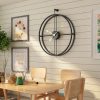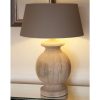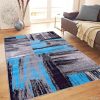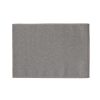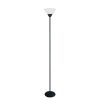Altes Haus Welcher Bodenbelag im Wohnzimmer?
Welche Bodenbeläge eignen sich generell für ein altes Haus?
Altes haus welcher bodenbelag im wohnzimmer – Yo, so, altes Haus, neue Böden – klingt nach mega-Projekt, oder? Aber chill mal, wir checken das zusammen. Alte Häuser haben ihren eigenen Vibe, dabei ist der Boden echt crucial. Man muss auf so einiges achten, wie Unebenheiten im Untergrund, mögliche Feuchtigkeit und natürlich den Style-Faktor. Lass uns mal die gängigsten Bodenbeläge durchgehen und sehen, welcher am besten zu deinem “Kiez” passt.
Geeignete Bodenbeläge für alte Häuser: Vor- und Nachteile
Okay, let’s get this bread! Hier ein Überblick über die gängigsten Bodenbeläge und wie sie sich in einem alten Haus schlagen. Wir sprechen über Parkett, Dielen, Fliesen, Laminat und Kork. Jeder hat seine eigenen Stärken und Schwächen – man muss einfach den richtigen für seine Bedürfnisse finden.
Parkett in alten Häusern
Parkett ist mega-stylish, aber in alten Häusern kann es tricky werden. Der Vorteil ist natürlich die Optik – echt classy! Aber Unebenheiten im Untergrund können ein Problem sein, da Parkett ziemlich empfindlich ist. Eine sorgfältige Vorbereitung des Untergrunds ist hier echt wichtig, sonst knarzt und quietscht es später wie verrückt. Die Kosten sind mittel bis hoch, je nach Holzart und Verlegeart.
Die Verlegung selbst ist ziemlich aufwendig, besonders in alten Häusern mit unebenen Böden. Manchmal braucht man da echt einen Profi.
Dielen in alten Häusern
Dielen sind oft schon vorhanden und haben ihren ganz eigenen Charme. Sie sind robust und langlebig, können aber auch ziemlich empfindlich auf Feuchtigkeit reagieren. Wenn der Untergrund nicht perfekt ist, kann man sie schleifen und neu versiegeln lassen – das ist aber auch eine Kostenfrage. Die Kosten sind mittel, die Verlegung hängt vom Zustand der Dielen ab.
Bei stark beschädigten Dielen kann es richtig teuer werden.
Fliesen in alten Häusern
Fliesen sind super-praktisch, wasserfest und robust. Perfekt für Badezimmer oder Küchen in alten Häusern. Sie sind auch relativ unempfindlich gegenüber Unebenheiten im Untergrund. Die Kosten sind mittel bis hoch, je nach Fliesenart und Verlegeart. Die Verlegung ist aufwendiger als bei Laminat, aber weniger als bei Parkett.
Laminat in alten Häusern
Laminat ist der günstige Kandidat. Es ist relativ einfach zu verlegen und verzeiht Unebenheiten im Untergrund besser als Parkett. Aber es ist nicht so langlebig wie Parkett oder Dielen und wirkt nicht so hochwertig. Die Kosten sind niedrig, die Verlegung relativ einfach.
Kork in alten Häusern
Kork ist der nachhaltige Bro. Er ist wärmedämmend, schalldämmend und fußwarm. Er ist auch relativ unempfindlich gegenüber Unebenheiten. Aber er ist empfindlicher gegenüber Kratzern und Feuchtigkeit als andere Beläge. Die Kosten sind mittel, die Verlegung relativ einfach.
Verlegemethoden für Parkett und Dielen in alten Häusern, Altes haus welcher bodenbelag im wohnzimmer
Bei unebenen Untergründen muss man bei Parkett und Dielen oft einen Ausgleich schaffen. Das kann man mit einer Ausgleichsschicht aus Spachtelmasse oder selbstnivellierendem Estrich machen. Das ist wichtig, damit der Boden später nicht knarzt oder quietscht. Die Verlegung von Parkett erfolgt meist schwimmend oder vollflächig verklebt. Bei Dielen kommt es auf den Zustand der alten Dielen an – manchmal kann man sie einfach schleifen und neu versiegeln, manchmal muss man sie komplett austauschen.
Kostenvergleich und Geeignetheit verschiedener Bodenbeläge
| Bodenbelag | Vor- und Nachteile | Kosten (inkl. Verlegung) | Geeignetheit für alte Häuser |
|---|---|---|---|
| Parkett | Hochwertig, langlebig, aber empfindlich auf Unebenheiten; aufwendige Verlegung | Hoch | Mittel (mit guter Vorbereitung des Untergrunds) |
| Dielen | Charmant, robust, langlebig, aber empfindlich auf Feuchtigkeit | Mittel | Gut (bei gutem Zustand; sonst hoher Sanierungsaufwand) |
| Fliesen | Wasserfest, robust, unempfindlich auf Unebenheiten | Mittel bis Hoch | Gut (vor allem in Feuchträumen) |
| Laminat | Günstig, einfach zu verlegen, verzeiht Unebenheiten | Niedrig | Gut (als Kompromisslösung) |
| Kork | Wärmedämmend, schalldämmend, fußwarm, aber empfindlich auf Kratzer und Feuchtigkeit | Mittel | Gut (bei guter Vorbereitung des Untergrunds) |
Der Wohnzimmerspezifischen Aspekte
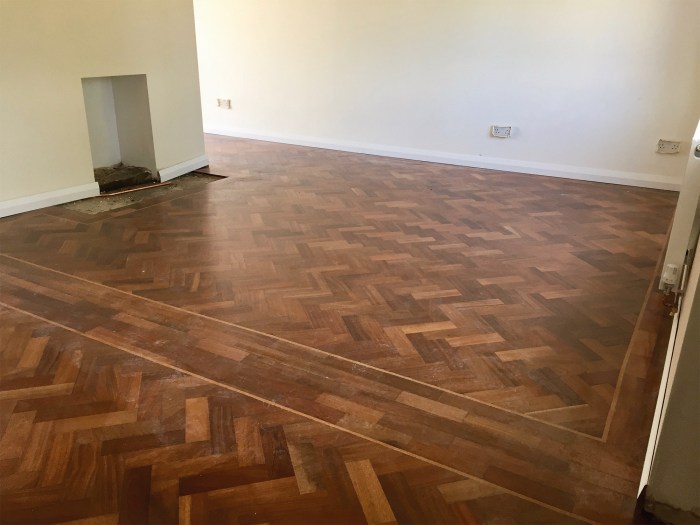
Source: co.uk
Right, so, let’s get down to the nitty-gritty about flooring in your living room, especially if it’s in a, like, mega-old house. It’s not just about looks, innit? We’re talking practicality and vibe checks here.
Choosing the right floor covering for your old-house living room is a total game-changer. You need something that can handle the daily grind, keeps things cosy, and looks, well, wicked. Think durability, insulation, and aesthetics – all rolled into one, mate. Old houses often have wonky floors and drafts, so your choice of flooring needs to be up to the task.
Also, altes Haus, welcher Bodenbelag im Wohnzimmer? Parkett, vielleicht? Oder doch eher so ’80er Jahre Teppich? Passt ja auch irgendwie zum alten Fernseher, schaut mal hier alter fernseher und wohnzimmer , da kriegt man Ideen! Aber egal, Hauptsache der Boden knarzt nicht so laut wie Oma beim Aufstehen – sonst muss man ja gleich den ganzen Fußboden neu machen, und das kostet ja ein Vermögen!
Anforderungen an einen Bodenbelag im Wohnzimmer eines alten Hauses
Basically, your living room floor needs to be a total boss. It’s gonna take a beating, so it needs to be super durable. Think kids, pets, and all that general mayhem. Plus, old houses can be chilly, so good insulation is a must – you don’t want to be shivering your socks off all winter. And obvs, it’s gotta look banging, right?
It’s the heart of your home, after all.
Auswirkungen verschiedener Bodenbeläge auf die Raumtemperatur und den Schallschutz in einem alten Haus
Different floors totally change the vibe. Hardwood, for example, looks lush but can feel a bit chilly underfoot and doesn’t do much for soundproofing. A thick carpet, on the other hand, is mega-cosy and a sound-absorbing legend. Think about your old house’s quirks; if it’s drafty, a well-insulated floor is your best mate. If it’s noisy, a carpet is a total lifesaver.
Stone or tile are a bit more, you know, unforgiving on the feet, but they’re super easy to clean and can be really stylish.
Gestaltungskonzept des Wohnzimmers mit unterschiedlichen Bodenbelägen
Imagine this: a plush, comfy carpet in the chill-out zone, maybe by the sofa, for those cosy movie nights. Then, maybe some sleek hardwood or stylish tiles in the rest of the room – that’s a total vibe. You could even use rugs to zone different areas, creating a cool, layered look. Think about using different textures and colours to create interest and separate spaces within your living room.
A mix of materials adds character, especially in an older house. For instance, a large Persian rug on top of hardwood flooring would create a lovely contrast and add warmth.
Vor- und Nachteile von Teppichböden im Wohnzimmer eines alten Hauses
Carpets are proper comfy, right? They’re soundproof champions, keep things warm, and look amazing. However, they can be a bit of a nightmare to clean, especially if you’ve got little ones or pets. They can also trap dust and allergens, which is a no-go for anyone with allergies. Other options, like hardwood or laminate, are easier to clean but might not be as cosy or soundproof.
Think about your lifestyle and priorities when making your choice.
Aspekte der Renovierung und des Untergrunds: Altes Haus Welcher Bodenbelag Im Wohnzimmer
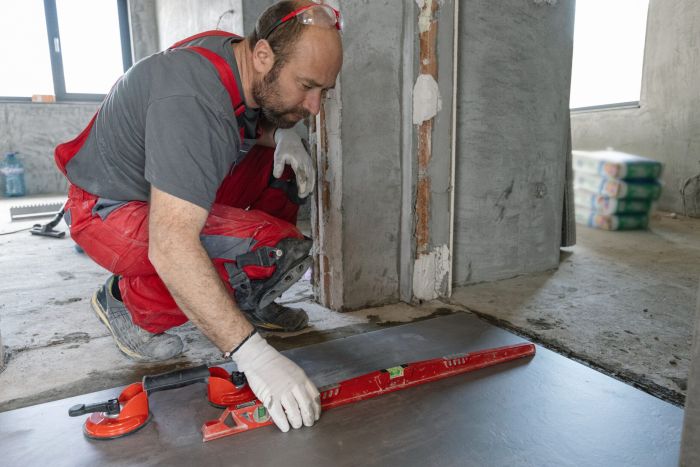
Source: pcdn.co
Right, so, you’re gonna be laying some new flooring in your gaff, but old houses, mate, they’re a proper nightmare sometimes. Expect the unexpected, innit? Things aren’t always as they seem, especially under the surface. Getting it right is mega important, or you’ll be pulling your hair out later.Preparing the subfloor in an old house is, like, the most crucial bit of the whole shebang.
If you skimp on this, you’ll be kicking yourself later. We’re talking about a solid foundation for your new floor – no dodgy bits that’ll cause your new flooring to crack or warp. Think of it as building a proper base for your wicked new floor.
Mögliche Probleme beim Verlegen von Bodenbelägen in alten Häusern
Old houses often hide a multitude of sins, yeah? You might find all sorts of nasty surprises lurking beneath the surface. Uneven floors are common, often with dips and bumps that need sorting before you even think about laying your new floor. Then there’s the issue of old adhesive residue, which can be a right pain to remove.
Cracks in the screed, hollow areas beneath the floorboards, and even old plumbing issues could all cause major problems. Basically, you need to be prepared for anything, because it’s gonna throw you a few curveballs.
Notwendige Vorbereitungsschritte für den Untergrund
Before you even think about getting your new floor down, you need to properly prep the subfloor. This might involve removing old carpets or tiles, and getting rid of any sticky residue. Then, you’ll likely need to fill in any cracks or holes, and level out any uneven areas. This is where a self-levelling compound comes in handy.
A primer is also a good idea to ensure your new flooring adheres properly. Basically, it’s all about creating a smooth, solid surface for your new floor. Think of it as prepping a canvas before you start painting – you wouldn’t just slap paint on a bumpy wall, would you?
Schritt-für-Schritt-Anleitung zur Vorbereitung des Untergrunds für Parkett
Alright, so let’s say you’re going for a proper posh parquet floor. Here’s the lowdown on prepping the subfloor:
1. Clear the decks
Remove any existing flooring and get rid of all the rubbish. Make sure the area is spotless.
2. Assess the damage
Check for any cracks, holes, or uneven areas in the subfloor. You might need to repair any damaged areas with a suitable filler.
3. Level it out
Use a self-levelling compound to create a perfectly smooth surface. Follow the manufacturer’s instructions carefully – it’s crucial to get the right consistency.
4. Prime time
Once the levelling compound is completely dry, apply a primer designed for parquet. This will improve adhesion and prevent moisture problems.
5. Check it again
Make sure everything is perfectly level and dry before you start laying your parquet.
Geeignete Ausgleichsmassen für unebene Untergründe in alten Häusern
There are loads of different levelling compounds out there, mate. You’ve got your standard self-levelling compounds, which are easy to use and work well for smaller areas. For larger areas or more significant unevenness, you might need a thicker compound or even a combination of methods. For really extreme cases, you might need to consider something like a cement screed.
Choosing the right one depends entirely on the state of your floor and the type of flooring you’re installing. It’s always best to consult a flooring specialist if you’re unsure. They can advise you on the best product for your specific situation.
Stil und Ästhetik im alten Haus
Right, so, let’s get this sorted. Choosing the right flooring in your gaff, especially an old one, isn’t just about practicality, it’s mega important for the vibe, innit? The floor is, like, the foundation of your room’s aesthetic, so you gotta nail it. Think of it as the base layer for your style game.Flooring choices massively impact the overall feel of your living room, especially in an older house.
A modern floor in a period property can look a bit… off, you know? Like wearing trainers to a fancy dress ball. But get it right, and you can totally create a wicked space that’s both stylish and respects the history of the place.
Beispiele für die Kombination von verschiedenen Bodenbelägen mit der Einrichtung eines alten Hauses
Okay, so imagine this: you’ve got a banging old house with high ceilings and original features. Pairing, say, reclaimed wooden floorboards with vintage furniture and plush velvet sofas creates a totally lush, cosy vibe. It’s all about that blend of old and new, creating a space that’s both comfy and stylish. On the flip side, if you’re going for a more modern look, polished concrete floors could work a treat, contrasting beautifully with minimalist furniture and pops of colour.
It’s all about balance, bruv.
Auswirkungen verschiedener Bodenbeläge auf den Gesamteindruck des Wohnzimmers im Kontext eines alten Hauses
Think about it: dark wood floors can make a room feel cosier and more intimate, especially in a large living room. Light-coloured floors, on the other hand, can make a small space feel brighter and more airy – a total game changer if your living room’s a bit of a snug. A really worn, rustic floor can add tons of character, giving your room a lived-in, vintage feel.
But, a super shiny, modern floor might look a bit out of place, unless you’re going for a super specific, edgy look.
Stilvolle und passende Bodenbeläge für ein Wohnzimmer in einem alten Haus
Here’s the lowdown on some floor options, sorted by style:
- Landhaus: Reclaimed wooden floorboards, terracotta tiles, stone flags. Think rustic charm, mate.
- Modern: Polished concrete, large-format tiles, engineered wood in a neutral colour. Keep it sleek and simple.
- Klassisch: Parquet flooring, wide-plank hardwood floors, patterned tiles. Elegant and timeless, yeah?
Visuelles Konzept für die Gestaltung eines Wohnzimmers in einem alten Haus mit altem Dielenboden
Picture this: a spacious living room with original, wide-plank wooden floorboards, slightly worn but beautifully polished. The wood has a rich, honey-coloured tone. Sunlight streams through large windows, highlighting the grain of the wood. A large, plush, emerald green velvet sofa sits against one wall, complemented by antique armchairs in a complementary shade of brown. A large Persian rug sits in the centre of the room, adding warmth and texture.
The walls are painted a soft, creamy white, allowing the floorboards and furniture to take centre stage. The overall effect is one of relaxed elegance, blending the charm of the old floor with contemporary comfort and style. It’s all about that sophisticated, lived-in feel, innit? Proper lush.
Welche Vorbereitungen sind beim Verlegen von Fliesen in einem alten Haus notwendig?
Der Untergrund muss absolut eben und trocken sein. Oftmals ist eine Ausgleichsschicht notwendig. Bestehende Beschichtungen müssen entfernt werden. Eine geeignete Grundierung verbessert die Haftung des Fliesenklebers.
Kann man Laminat in einem alten Haus verlegen?
Ja, Laminat ist relativ einfach zu verlegen und verzeiht kleinere Unebenheiten. Allerdings sollte der Untergrund sauber und trocken sein. Bei stark unebenen Böden ist eine Ausgleichsschicht empfehlenswert.
Wie wirkt sich die Wahl des Bodenbelags auf den Schallschutz aus?
Massive Bodenbeläge wie Parkett oder Fliesen bieten einen besseren Schallschutz als Laminat oder Kork. Zusätzliche Trittschalldämmung kann den Schallschutz deutlich verbessern.



